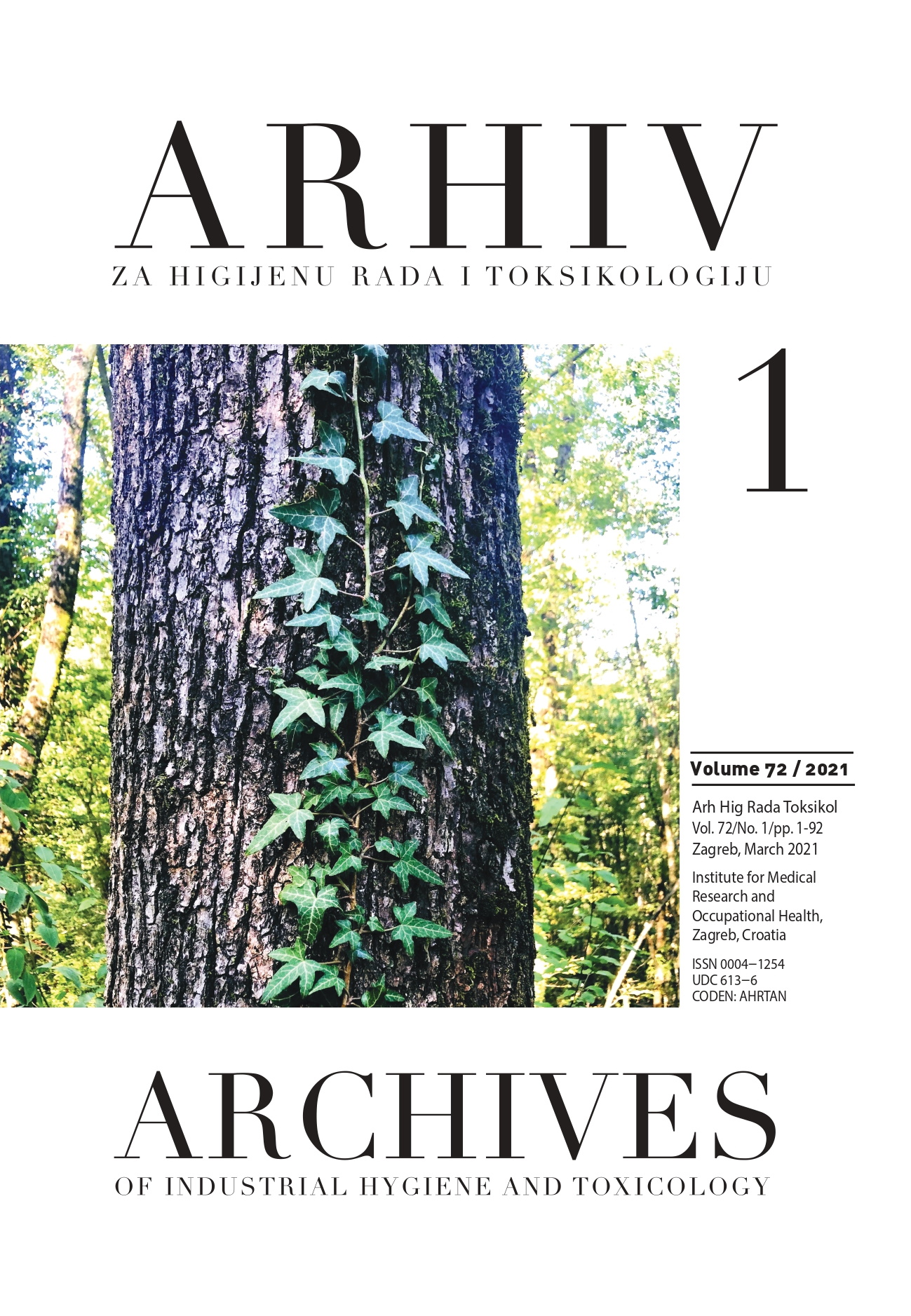Radioactivity of soil in Croatia I: naturally occurring decay chains
DOI:
https://doi.org/10.2478/aiht-2021-72-3349Keywords:
210Pb, 222Rn, 226Ra, 232Th, 238U, gamma radiation, high-resolution gamma-ray spectrometry, representative radionuclidesAbstract
The assessment of environmental radioactivity much relies on radionuclide content in soil. This stems from the significant contribution of soil to both external and internal exposure to ionising radiation via direct emission of gamma radiation and soil-to-plant radionuclide transfer, respectively. This motivated us to carry out a systematic research on the radioactivity of soil in Croatia to obtain relevant data that can be used as a basis for understanding the related effects of geomorphological, biogeographical, and climatological properties of the environment. We collected samples of the surface layer of uncultivated soil (0–10 cm) at 138 sites from all over the country and measured them for radionuclide activity concentrations by means of high-resolution gamma-ray spectrometry. This resulted in radioactivity maps containing data on activity concentrations of representative radionuclides in the environment. In this paper, which is the first in our two-part presentation, we focus on the naturally occurring 232Th and 238U decay chains and their correlations with the diversity of Croatian regions. For both of the chains, activity concentrations were the highest in the Dinaric region, the lowest in the Pannonian region, and intermediate in the Adriatic region. Relatively high concentrations of 226Ra in the soil of the Dinaric region implied a possibility of an enhanced emanation of its progeny 222Rn into the air. Activity concentrations of 210Pb were additionally elevated in areas with dense vegetation, most probably due to an atmospheric deposition of airborne 210Pb onto the surface of plants and their eventual decomposition on the ground.














